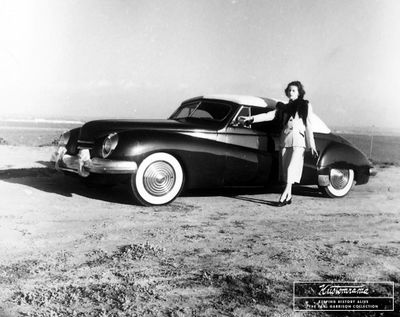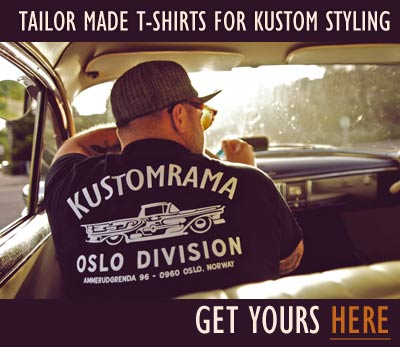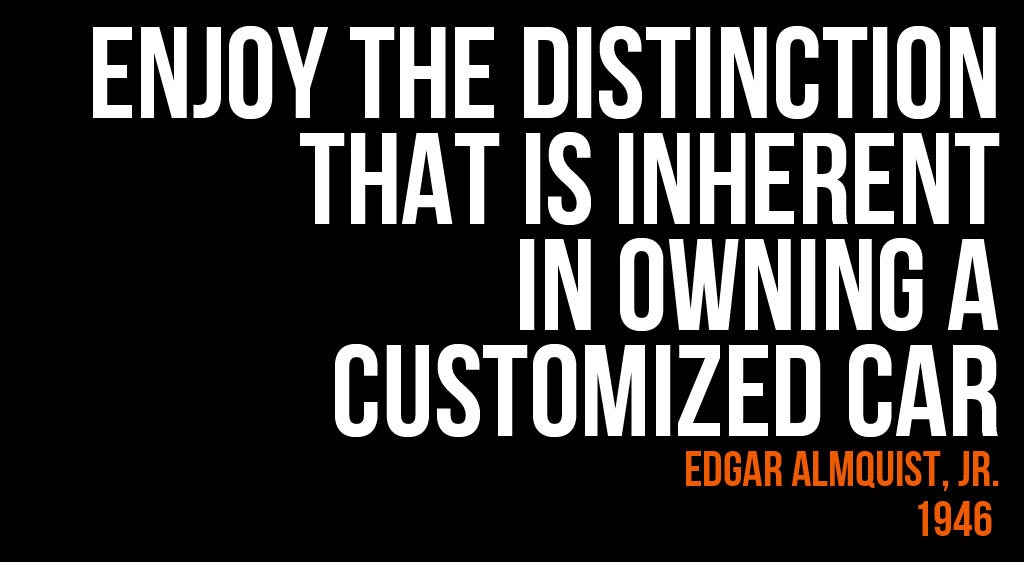From Kustomrama

Dick Owens of
Redondo Beach,
California, had this
1940 Mercury convertible restyled by
Barris Kustoms after returning from
WWII. A veteran of the
Battle of Guadalcanal, Dick came home, married his girlfriend Betty, and got right into the booming custom car scene. According to Betty’s brother,
Harold Johnson, Dick already had the Mercury in
1945, and it was in grey primer at the time.
Sam Barris handled the
chop, sometime between
1945 and
1947, giving the car a sleek, lowered profile. The running boards were removed and replaced with filler panels, the license plate was recessed into the trunk, and a padded
Carson Top was added by
Glen Houser. The car also featured
fender skirts, and
Hollywood Flipper hubcaps wrapped in
blackwall tires. Photo courtesy of
Tina Bergeson. 
After returning from
WWII,
Glen Wall settled in
Whittier,
California, and found himself drawn to the booming post-war custom car scene. In the mid-
1940s, while working at a car lot, he bought this
1939 Ford convertible, already chopped and fitted with a
Carson Top. The car’s sleek, low stance turned heads everywhere he went, and before long, people started offering to buy it. That’s when Glen realized he could turn customizing into a business. He began sourcing
1939 Ford convertibles,
chopping the tops himself, welding the posts, and having them leaded and primed before taking them to
Glen Houser at
Carson Top Shop for a padded top. Black was the best-selling color, and his cars featured
fender skirts,
Appleton spotlights, Buick trim details,
sunken license plates, and dual exhaust. Looking back, Glen told
Sondre Kvipt of
Kustomrama in
2016 that he estimated building and selling around 20-25 custom cars before chuckling, "
But that’s a conservative number." This
1939 Ford was the first, and the one that started it all. Photo from
The Glen and Forey Wall Collection.

After serving in the
Marine Corps during
WWII,
Lawrence Garrison moved to
Quincy,
Massachusetts, in
1947, bringing his passion for custom cars to the
East Coast before hot rod and custom car magazines spread the movement. Based on a self-penned design, Larry transformed this
1940 Mercury into a sleek, low-slung masterpiece. He
channeled the body,
sectioned the hood, and
chopped the windshield to achieve a streamlined European-inspired look. Full
fadeaway fenders,
nosed and decked bodywork, and
push-button doors added to its elegance, while
1947 Buick bumpers and
spun hubcaps gave it a distinctive flair. Larry built the car entirely himself, fabricating parts, stitching the Spanish leather interior, and even installing hydraulic window lifts. His Mercury wasn’t just a showstopper. It was a symbol of how custom culture was spreading across America. Luckily, the car has survived, and today it is currently located in
Norway. Photo courtesy of
Paul Garrison.
The outbreak of World War II temporarily halted the progress of the custom car movement as material shortages, fuel rationing, and restrictions on civilian car production made it difficult for enthusiasts to modify or even maintain their vehicles. However, the war had an unintended positive impact on the industry. Many young servicemen received extensive training in welding, machining, and fabrication—skills that would later prove invaluable in car customization. Exposure to European sports cars and racing culture further influenced their tastes and ideas, introducing new design concepts that would shape the post-war era. When the war ended, a booming economy provided returning veterans with disposable income, allowing them to invest in automobiles and modifications. This combination of technical expertise, fresh inspiration, and financial means led to a resurgence in car culture, laying the groundwork for the explosive growth of the custom car scene in the late 1940s and beyond.
Did you enjoy this article?
Kustomrama is an encyclopedia dedicated to preserve, share and protect traditional hot rod and custom car history from all over the world.
Can you help us make this article better?
Please get in touch with us at mail@kustomrama.com if you have additional information or photos to share about World War II.
This article was made possible by:
SunTec Auto Glass - Auto Glass Services on Vintage and Classic Cars
Finding a replacement windshield, back or side glass can be a difficult task when restoring your vintage or custom classic car. It doesn't have to be though now with auto glass specialist companies like www.suntecautoglass.com. They can source OEM or OEM-equivalent glass for older makes/models; which will ensure a proper fit every time. Check them out for more details!
Do you want to see your company here? Click here for more info about how you can advertise your business on Kustomrama.








